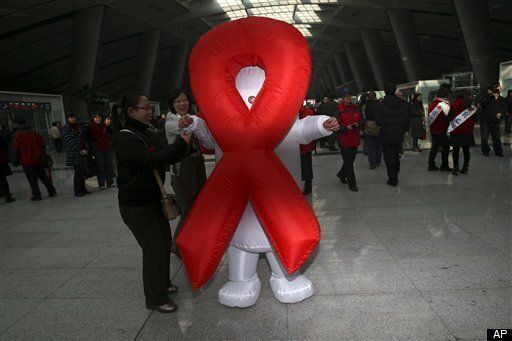
Flatline spending will spell disaster for African children
"Please tell your government, tell the American people, 'thank you' from me -- 'thank you for giving me back my grandchildren.'"
Last October, in a rural part of Kenya, 48 year old Monica said these words. She was sitting in her two room mud house perched on the top of a steep hill with her husband and their seven year old granddaughter, Brenda, and five year old grandson Hezron. "My grandchildren were dying, you see."
Six years earlier Monica's daughter had passed away from HIV. Unbeknownst to the distant relatives who were caring for Brenda after her mother's death, she had been infected as well -- and she was suffering badly. Without medication to treat the disease, opportunistic infections were weakening her small body.
Monica's grandchildren, Brenda and Hezron, were barely alive when she rushed them back to her small village of Homabay, Kenya and enrolled them in an orphans and vulnerable children (OVC) program offered by her local Catholic Diocese, and funded by the United States' President's Emergency Plan for AIDS Relief (PEPFAR). To their frantic grandmother they seemed only days away from dying, but once introduced to PEPFAR, everything changed.
With PEPFAR funded anti-retrovirals (ARVs) to keep Brenda's HIV at bay, along with medical support for both Brenda and Hezron, school uniforms so that they could attend school, early childhood development interventions and seeds for the family to grow a nutritious garden, Brenda and Hezron literally came back to life before their grandmother's eyes.
And they were not the only ones. From 2004 to 2009, PEPFAR provided $19 billion to fund global AIDS programs in fifteen countries hardest hit by the AIDS pandemic. To date, the lifesaving program has provided antiretroviral (ARV) treatment to more than 2.4 million men, women and children living with HIV/AIDS and cared for more than 4 million children who are orphaned or affected by AIDS.
Until this past year, the U.S. commitment to fund PEPFAR had increased steadily to keep pace with the disease. Sadly, PEPFAR's unprecedented successes are now in grave danger. Beginning in 2009, the administration's proposed budgets to Congress called for essentially flat funding for global AIDS programs. The US House is on course to approve an increase of only 1.8 percent for 2011, and Senator Leahy's appropriations subcommittee is expected to follow suit by the end of this month. This means that other vulnerable children like Brenda and Hezron cannot be supported and cared for, and therefore might not survive.
To many in Washington, flat-funding investment in global HIV/AIDS funding, ten percent of which goes to orphans and vulnerable children, is a regrettable but necessary step in tough economic times.
But, with AIDS still killing 7,400 people each day, now is not the time to slow down, especially when you consider the impact of the crisis on children. In the five countries with the highest adult HIV prevalence worldwide, HIV is the single leading cause of under five mortality and responsible for 41-56% of deaths in those countries.
Children who have lost their parents to AIDS -- especially their mothers -- or whose parents are sick with HIV, are carrying the greatest burden. A motherless child is 10 times more likely to die within two years of his mother's death than one whose mother is alive and healthy. So investing in the fight against AIDS directly and indirectly contributes to increased child survival rates. One study in Botswana found that HIV/AIDS antiretroviral treatment (ART) rollout was associated with an 81 percent reduction in mortality in uninfected infants, and a 93 percent reduction in orphan-hood. These are real numbers, real children and real successes.
But all of this progress is now being threatened. All the gains in the lives of children like Brenda and Hezron will be confined to a chosen lucky few if global leaders continue down this path of flat-funding. What began as a transformational shift in the impact of a terrible disease will return to small successes around the margins -- allowing the pandemic to grow stronger once again. The numbers of orphaned and vulnerable children will balloon as another generation of parents will be lost.
As thousands of AIDS activists from around the globe gather in Vienna Austria from July 18th to the 23rd for the International AIDS Conference, they will press those in power for more action on AIDS. Given the 2010 deadline for universal access to ARVs set by world leaders, this conference will coincide with a major push for expanded access to HIV prevention, treatment, care and support.
It has been said that great necessities call forth great leaders, and with the world's finances still in crisis, this is surely one of those times. It is that type of great leadership that we need now. Governments, led by President Obama and the US Congress, must step up and provide full funding to PEPFAR and the Global Fund to Fight AIDS, TB and Malaria. The future of children like Brenda and Hezron depend on it.